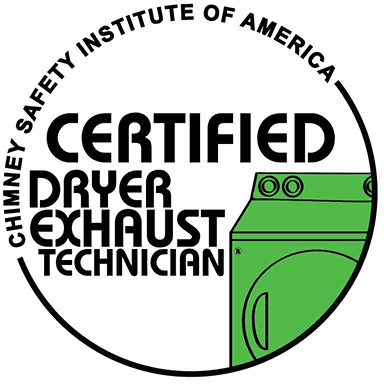A well-functioning chimney damper is an essential component for the efficiency, safety, and comfort of your home. If you own a fireplace, you know how important it is to control airflow in and out of your home, especially during cold winter months. The right chimney damper can help regulate the heat and prevent drafts from entering, but how do you choose the best one for your fireplace? In this article, we’ll explore the key considerations for selecting a chimney damper, how it works, and why it’s so important for your home. We’ll also walk you through the different types of dampers available so you can make the best choice for your setup.
What Is a Chimney Damper?
A chimney damper is a device located in the chimney flue that can be opened or closed to control the flow of air and smoke. When your fireplace is not in use, you can close the chimney damper to prevent cold air from entering your home and warm air from escaping. Conversely, when you light a fire, you open the damper to allow smoke and combustion gases to escape through the chimney.
The chimney damper plays a crucial role in maintaining indoor air quality, energy efficiency, and overall comfort. Without a properly functioning damper, your home could lose heat quickly, and you may even face smoke backdrafts that bring soot and toxins into your living space.
Why Choosing the Right Chimney Damper Matters
Selecting the correct chimney damper is important for several reasons:
- Energy Efficiency: The right damper will help seal your chimney flue when the fireplace is not in use, preventing heat loss and reducing your energy bills.
- Fireplace Performance: Proper airflow is crucial for maintaining an efficient fire in your fireplace. A poor damper can restrict airflow, leading to inefficient burning and increased smoke.
- Safety: A well-sealed chimney damper will also help prevent pests, moisture, and debris from entering your chimney when it’s not in use, which is vital for fire safety.
- Durability: Investing in a durable, high-quality chimney damper ensures longevity and reduces the need for frequent repairs or replacements.
Types of Chimney Dampers
There are different types of chimney dampers to consider, and each has its own advantages and disadvantages. Let’s break down the main types:
1. Throat Dampers
A throat damper is the traditional type of chimney damper that sits just above the firebox, typically in the throat of the chimney. It is made of metal and operates with a handle or pull chain. These dampers are simple to use and can be effective, but they can wear out over time due to exposure to high heat and soot.
Pros:
- Easily accessible
- Simple to operate
- Affordable option
Cons:
- Prone to rust and wear
- Doesn’t provide a complete seal, leading to some energy loss
2. Top-Sealing Dampers
A top-sealing damper is installed at the top of the chimney flue and is operated by a cable or chain from inside the fireplace. This type of damper provides a much tighter seal than traditional throat dampers because it’s located at the top of the chimney, preventing air from entering the chimney in the first place.
Pros:
- Offers superior energy efficiency by creating a tight seal
- Keeps out pests, debris, and moisture
- Lasts longer since it’s less exposed to extreme heat
Cons:
- More expensive to install
- Requires professional installation
3. Rotary Dampers
Rotary dampers are installed in the chimney flue and work by rotating a plate that controls the airflow. They are typically used in wood stoves but can also be found in some fireplaces. These dampers offer good control over airflow, but they’re less common in traditional fireplaces.
Pros:
- Excellent airflow control
- Less prone to rusting
Cons:
- Not ideal for all fireplace types
- Limited availability for installation in certain chimneys
How to Choose the Best Chimney Damper for Your Fireplace
Now that you know the different types of chimney dampers, how do you decide which one is right for your home? Here are a few factors to consider:
- Fireplace Type: Not all dampers are compatible with every type of fireplace. For example, if you have a masonry fireplace, a throat damper may be more practical, while a top-sealing damper might be the better option for prefabricated fireplaces.
- Energy Efficiency: If your priority is energy efficiency and you live in a colder climate, a top-sealing damper can provide the best seal, preventing both heat loss and cold drafts.
- Durability: Consider how often you use your fireplace. If you frequently use it, a durable, top-sealing damper made from corrosion-resistant materials might be a worthwhile investment. For occasional use, a throat damper may be sufficient.
- Budget: If you’re looking for a cost-effective solution, throat dampers are generally less expensive, though they may need more frequent maintenance. Top-sealing dampers cost more initially but can save money in the long run due to better energy efficiency and fewer repairs.
- Installation: Most chimney dampers require professional installation, especially top-sealing dampers. Make sure to contact a trusted chimney sweep or chimney restoration service to ensure the damper is installed correctly.
Maintaining Your Chimney Damper
Once you’ve chosen the right chimney damper, regular maintenance is key to keeping it functioning properly. Here’s what you can do:
- Annual Chimney Sweep: Having your chimney professionally cleaned at least once a year is crucial to remove soot, creosote, and debris that can affect your damper’s performance. A chimney sweep can also inspect the damper for any signs of wear or damage.
- Inspect the Damper: Look for signs of rust, warping, or wear. If your damper is not sealing properly, it may need to be repaired or replaced.
- Operate the Damper Correctly: Make sure the damper is fully open when you light a fire and fully closed when your fireplace is not in use to maximize its efficiency.
Keep Your Chimney Safe with Chimney Restoration of Kansas City
Choosing the right chimney damper for your fireplace is an important step in maintaining your home’s energy efficiency, safety, and comfort. Whether you opt for a traditional throat damper or a modern top-sealing damper, proper installation and maintenance are key to ensuring its longevity and effectiveness.
If you’re unsure which chimney damper is best for your home or need help with installation, we’re here to assist. At Chimney Restoration of Kansas City, our experienced team of chimney sweeps can provide expert advice, professional installation, and comprehensive maintenance services. Whether you’re looking for a new damper or need a thorough chimney sweep, we’ve got you covered. Connect with Chimney Restoration of Kansas City and keep your fireplace and chimney in top shape all year round.











